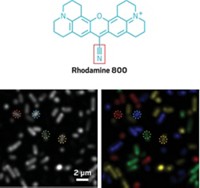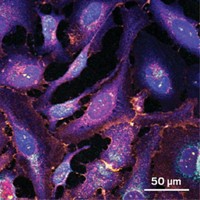Advertisement
Grab your lab coat. Let's get started
Welcome!
Welcome!
Create an account below to get 6 C&EN articles per month, receive newsletters and more - all free.
It seems this is your first time logging in online. Please enter the following information to continue.
As an ACS member you automatically get access to this site. All we need is few more details to create your reading experience.
Not you? Sign in with a different account.
Not you? Sign in with a different account.
ERROR 1
ERROR 1
ERROR 2
ERROR 2
ERROR 2
ERROR 2
ERROR 2
Password and Confirm password must match.
If you have an ACS member number, please enter it here so we can link this account to your membership. (optional)
ERROR 2
ACS values your privacy. By submitting your information, you are gaining access to C&EN and subscribing to our weekly newsletter. We use the information you provide to make your reading experience better, and we will never sell your data to third party members.
Analytical Chemistry
Quantum Dots In Captivity
Nitrobenzyl caging group tames quantum dot luminescence until unleashed by ultraviolet light
by Celia Henry Arnaud
November 17, 2008
| A version of this story appeared in
Volume 86, Issue 46

A team of researchers at Lawrence Berkeley National Laboratory has synthesized semiconducting nanocrystals, or quantum dots, that remain dark until they are turned on with pulses of ultraviolet light (J. Am. Chem. Soc., DOI: 10.1021/ja804948s). That's a trait that makes these quantum dots suitable as labels for a new breed of super-resolution microscopy capable of imaging single molecules.
"We want to be able to control when and where these quantum dots light up" to obtain better spatial and time resolution for experimental applications, says team leader Bruce E. Cohen.
Cohen and coworkers achieve this control by coating quantum dots with dithiolate ligands connected to ortho-nitrobenzyl (ONB) groups through a phosphoryl linker. Other aromatic groups have been shown on a case-by-case basis to either quench or enhance quantum dot luminescence. ONB quenches luminescence. The difference with ONB is that illuminating it with ultraviolet light initiates a photolytic reaction that releases it from the phosphoryl linker, thus lighting up the quantum dot on demand.
Cohen's group created the coating using a mixture of dithiolate ligands with and without ONB, which allows them to control the amount of ONB on the quantum dot surface. Quantum dots with 25% ONB have 400-fold lower photoluminescence than quantum dots with ONB-free dithiolate ligands. Even with only 10% ONB, the photoluminescence is reduced 100-fold. The researchers are currently investigating how few ONB groups they need to achieve sufficient caging.
Under normal microscope conditions, without special illumination, caged CdTe/CdS quantum dots remain dark. Exposing the quantum dots to intense pulses of UV or violet light releases ONB groups, unleashing luminescence from the dots. The uncaged quantum dots actually become brighter than their noncaged counterparts under the same conditions.
To assess the potential toxicity of caged quantum dots and their photolysis, Cohen and coworkers tested them in mouse cells that had previously been shown to take up quantum dots. The cells showed no obvious signs of toxicity before or after uncaging the quantum dots.
The team now plans to study the photophysics of the quenching mechanism. "The degree to which you get quenching is important in a lot of experiments" involving imaging techniques such as photoactivated localization microscopy (PALM), Cohen says.
The caged quantum dots are an "exciting new development," says Shimon Weiss, a chemist at University of California, Los Angeles, who also develops quantum dots as biological probes. "This technology might allow the use of quantum dots as fluorescence probes in superresolution imaging methods such as STED [stimulated emission depletion microscopy] and PALM, introducing clear advantages over conventional photoswitchable fluorophores with respect to multiplexing capabilities and photostability."







Join the conversation
Contact the reporter
Submit a Letter to the Editor for publication
Engage with us on Twitter